|
|
Saab
Svenska Aeroplan AB (AB = aktiebolag = limited) (SAAB) was founded in 1937 by the merger of Svenska Aero AB (SAAB, founded 1921) and AB Svenska Järnvägsverkstädernas Aeroplanavdelning (Swedish Railroad Workshops' Air Plane Department, ASJA, started early 1930s) with headquarters in Linköping. Later it became SAAB and then Saab Group. The style "Saab" replaced "SAAB" around 1950.
Saab Group is a Swedish aerospace and defence company. From 1947 to 1990 it was the parent company of automobile manufacturer Saab Automobile. Between 1968 and 1995 the company was in a merger with commercial vehicle manufacturer Scania-Vabis, known as Saab-Scania. The two were de-merged in 1995 by the new owner, Investor AB. Despite the demerger, both Saab and Scania share the right to use the griffin logo, which originates from the coat of arms of the Swedish region of Scania.
91 | 2000 |
Draken |
Viggen | Gripen
Saab 91 Safir
The Saab 91 Safir (Swedish: "sapphire") is a three (91A, B, B-2) or four (91C, D) seater, single engine trainer aircraft. The Safir was built by Saab AB in Linköping, Sweden, (203 aircraft) and by De Schelde in Dordrecht, the Netherlands (120 aircraft).
The Safir's first flight on 20 November 1945. The all-metal Safir was designed by Anders J. Andersson, who had previously worked for Bücker, where he designed the all-wood Bücker Bü 181 "Bestmann". The Safir thus shared many conceptual features of its design with the Bestmann.
The Saab 91A is powered by a 125 hp four cylinder de Havilland Gipsy Major 2c piston engine, or a 145 hp Gipsy Major 10 piston engine. The 91B, B-2 and C have a six-cylinder Lycoming O-435A engine with 190 hp. The 91D has a four-cylinder Lycoming O-360-A1A engine with 180 hp.
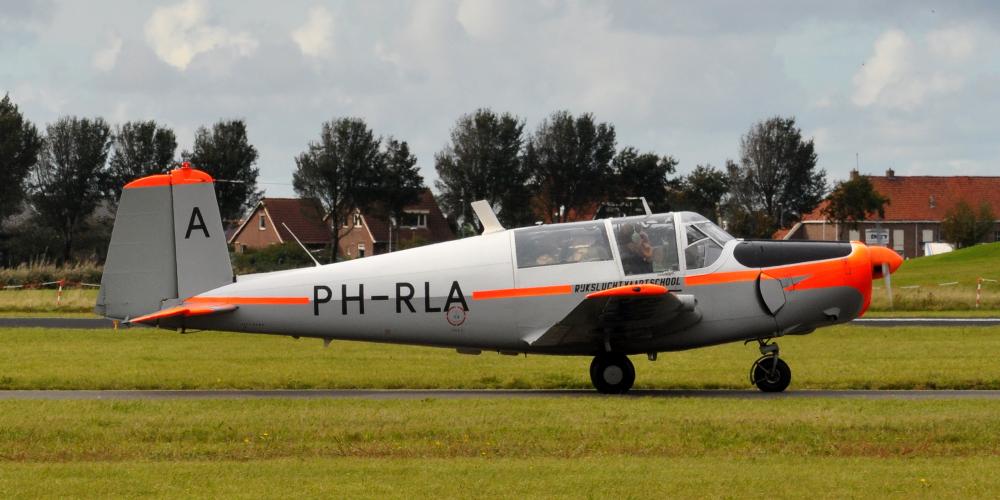
Saab 91 Safir 91D, registration PH-RLA, built 1959, serial number 91.367
Den Helder Airport (Maritiem Vliegkamp De Kooy) (DHR/EHKD), Den Helder, Netherlands, 16 September 2017
91 | 2000 |
Draken |
Viggen | Gripen
Saab 2000
The Saab 2000 is a twin-engined high-speed turboprop airliner built by Saab. It is designed to carry 50–58 passengers and cruise at a speed of 665 km/h (413 mph). Production took place in Linköping in southern Sweden. The Saab 2000 first flew in March 1992 and was certified in 1994. The last aircraft was delivered in April 1999, a total of sixty-three aircraft being built and thirty-three remaining in service as of July 2013.

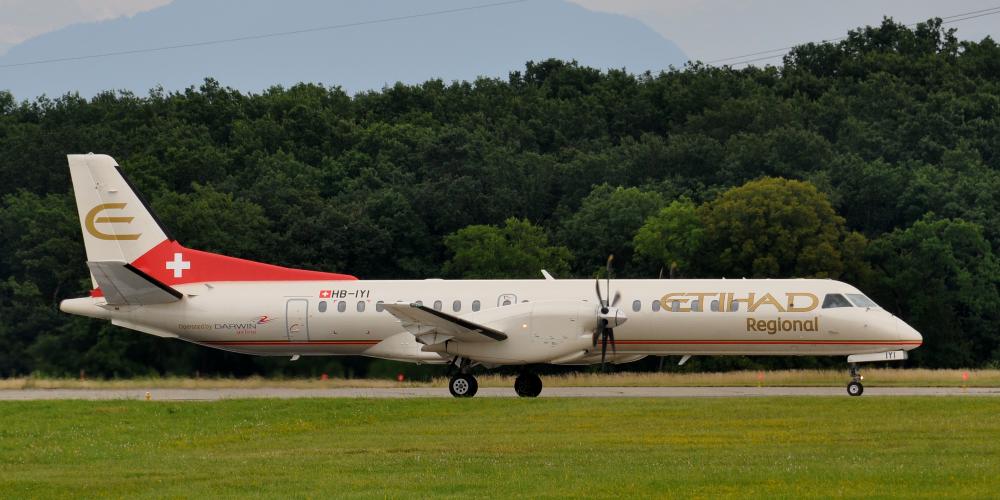
Saab 2000, registration HB-IYI, built 1995, serial number 2000-016
Cointrin (GVA), Geneva, Switzerland, 11 July 2016
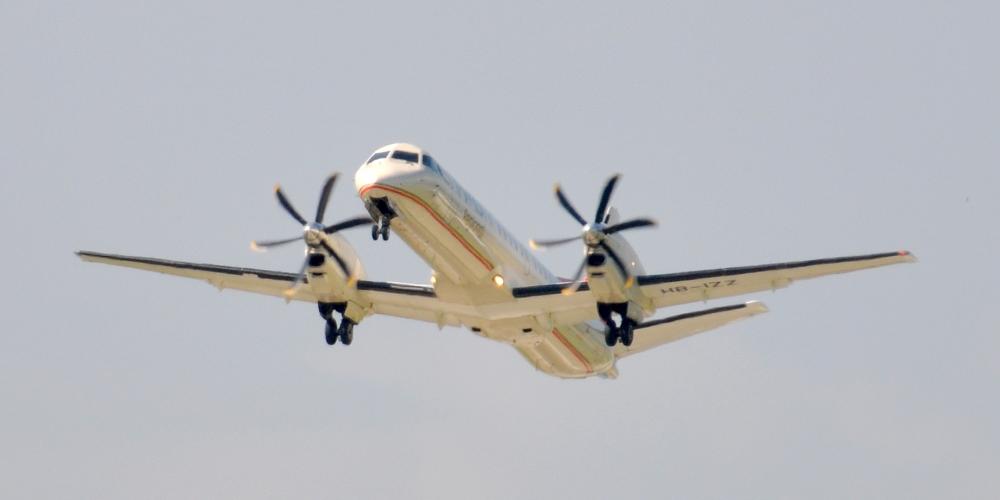
Saab 2000, registration HB-IZZ, built 1997, serial number 2000-048
Cointrin (GVA), Geneva, Switzerland, 25 July 2016

Saab 2000, registration HB-IYI, built 1995, serial number 2000-016
Cointrin (GVA), Geneva, Switzerland, 8 May 2017
91 | 2000 |
Draken |
Viggen | Gripen
Saab 35 Draken
The Saab 35 Draken ("Kite" or "Dragon") is a Swedish fighter aircraft developed and manufactured by Saab between 1955 and 1974. It was the first fully supersonic aircraft to be deployed in Western Europe.
The Draken was developed during the 1940s and 1950s to replace Sweden's first generation of jet-powered fighter aircraft, the Saab J 29 Tunnan and, later, the fighter variant (J 32B) of the Saab 32 Lansen. It featured an innovative double delta wing; in order to test this previously-unexplored aerodynamic feature, a sub-scale test aircraft, the Saab 210, was produced and flown. Developed in Sweden, the Draken was introduced into service with the Swedish Air Force (SAF) on 8 March 1960. Early models were intended purely to perform air defence missions, the type being considered to be a capable dogfighter for the era.
The Draken functioned as an effective supersonic fighter aircraft of the Cold War period. In Swedish service, it underwent several upgrades, the ultimate of these being the J 35J model. By the 1980s, the SAF's Drakens had largely been replaced by the more advanced Saab 37 Viggen fighter, while the introduction of the more capable Saab JAS 39 Gripen fighter was expected in service within a decade, although delayed. As a consequence of cutbacks and high maintenance costs, the SAF opted to retire the Draken during December 1999. The type was also exported to Austria, Denmark, Finland, and the United States; the last operated the type as a training aircraft for test pilots.
25 J 35As with short tail sections were rebuilt into the twin-seated trainer version SK 35C. This minor modification meant that the aircraft could easily be converted back to the J 35A standard if necessary. The trainer version lacked armament.
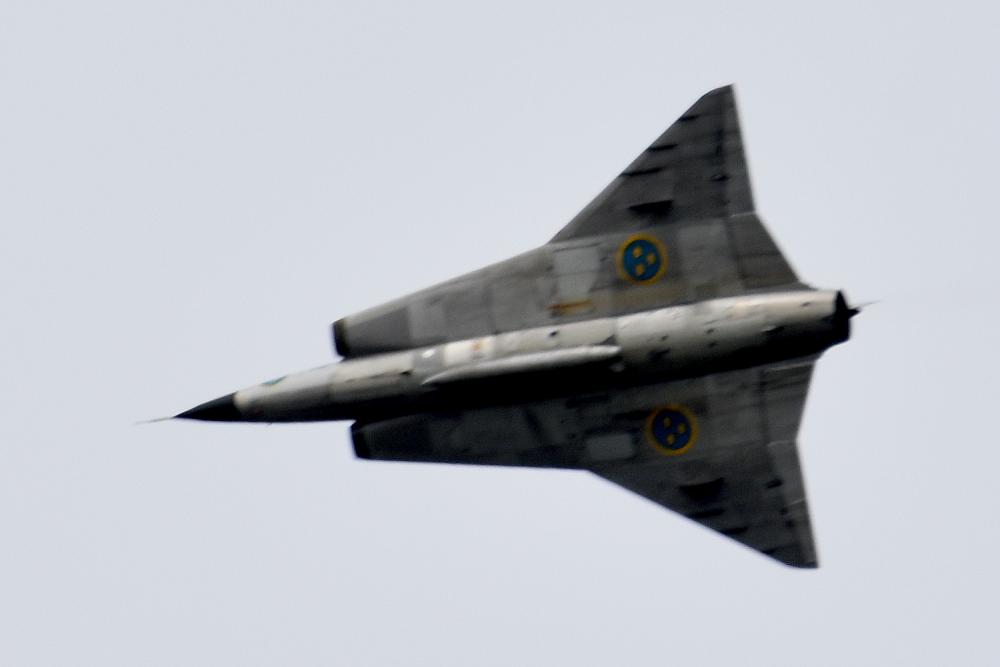
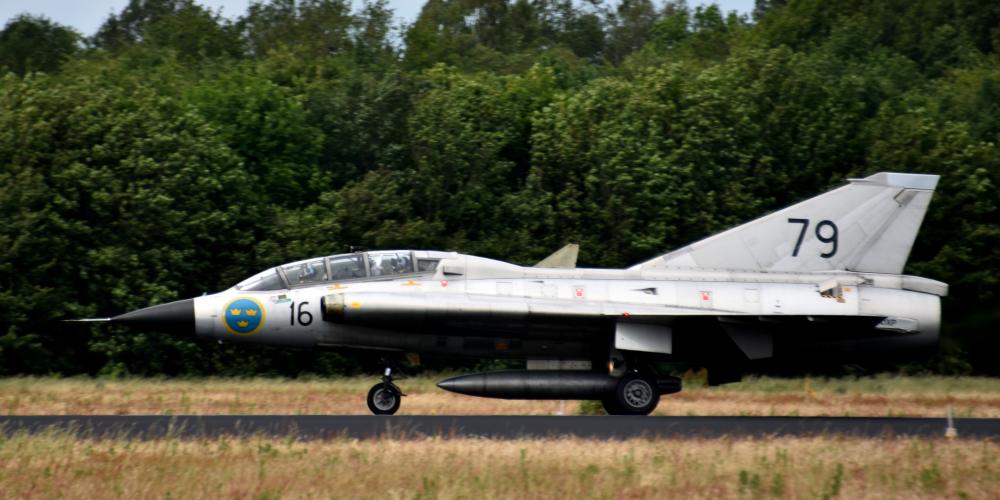
Saab SK 35C Draken, registration SE-DXP, built ????, serial number 35-810
Vliegbasis Volkel (UDE/EHVK), Uden, Netherlands, 13 June 2019
91 | 2000 |
Draken |
Viggen | Gripen
Saab AJS 37 Viggen
The Saab 37 Viggen ("Thunderbolt") is a Swedish single-seat, single-engine, short-medium range combat aircraft. Development work on the type was initiated at Saab in 1952 and, following the selection of a radical delta wing configuration, the resulting aircraft performed its first flight on 8 February 1967 and entered service in 21 June 1971. It was the first canard design produced in quantity.
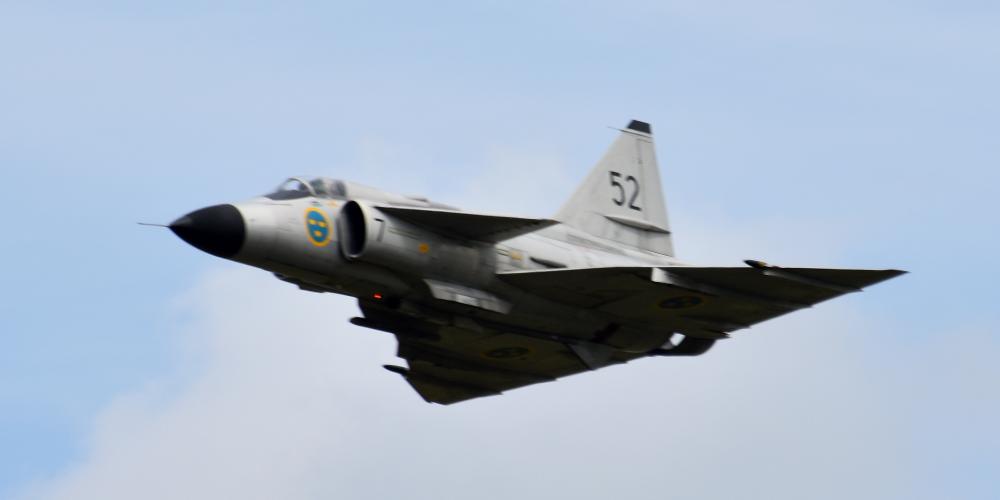

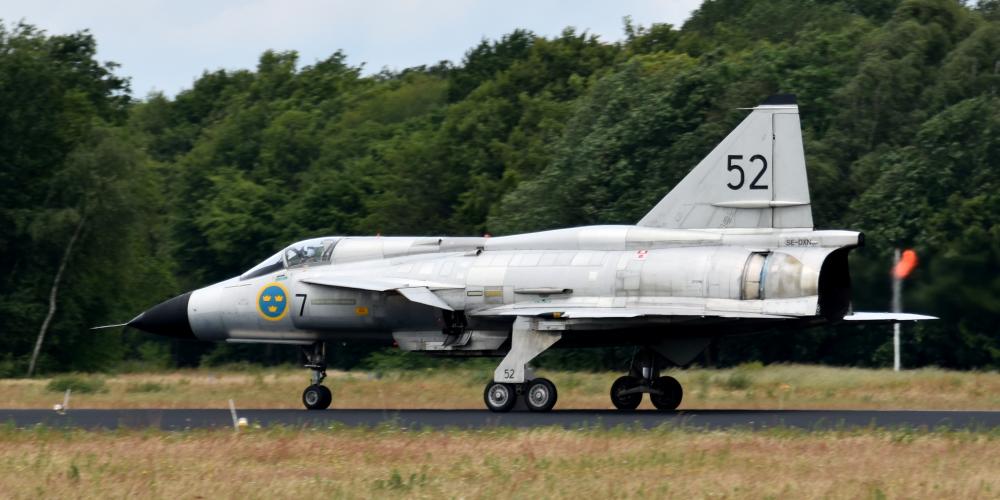
Saab AJS 37 Viggen, registration SE-DXN, built ????, serial number 37-098
Vliegbasis Volkel (UDE/EHVK), Uden, Netherlands, 13 June 2019
91 | 2000 |
Draken |
Viggen | Gripen
Saab JAS 39 Gripen
The Saab JAS 39 Gripen (griffin) is a light single-engine multirole fighter aircraft. It was designed to replace the Saab 35 Draken and 37 Viggen in the Swedish Air Force (Flygvapnet). The Gripen has a delta wing and canard configuration with relaxed stability design and fly-by-wire flight controls. It is powered by the Volvo RM12, and has a top speed of Mach 2. Later aircraft are modified for NATO interoperability standards and to undertake air to air refuelling.
The JAS 39 was first flying in 1988. Following two crashes during flight development and subsequent alterations to the aircraft's flight control software, the Gripen entered service with the Swedish Air Force in 1996. Upgraded variants, featuring more advanced avionics and adaptations for longer mission times, began entering service in 2003.
The JAS 39C is the NATO-compatible version of the Gripen with extended capabilities in terms of armament, electronics, etc. It can be refuelled in flight.
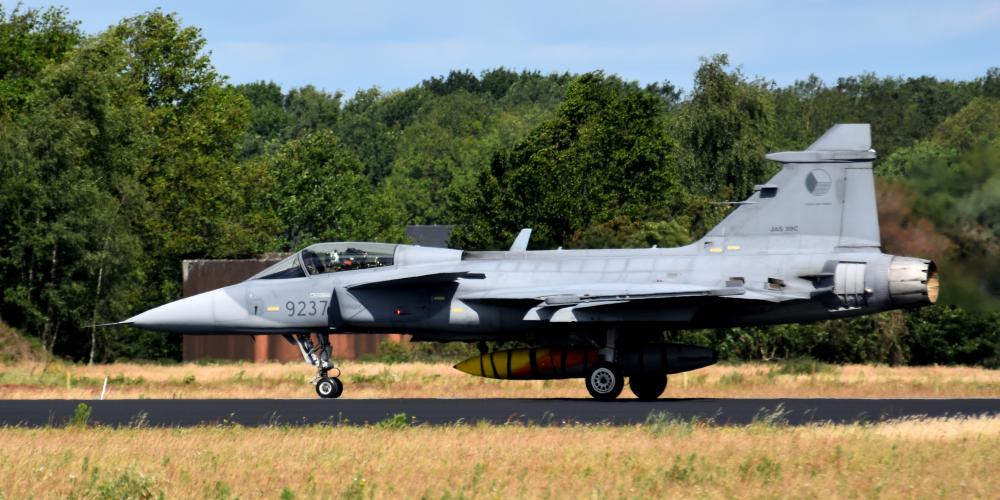
Saab JAS 39C Gripen, registration 9237, built ????, serial number 39-237
Vliegbasis Volkel (UDE/EHVK), Uden, Netherlands, 13 June 2019
91 | 2000 |
Draken |
Viggen | Gripen
|










